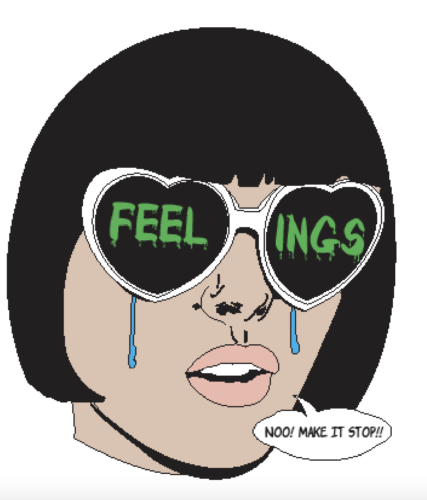With new bicycling facilities scheduled for construction, biking-related research being conducted and an ever-growing cyclist population, Portland State is becoming an integral part of Portland’s bicycle culture, say PSU staff and students.
Campus bike culture about to see new life
With new bicycling facilities scheduled for construction, biking-related research being conducted and an ever-growing cyclist population, Portland State is becoming an integral part of Portland’s bicycle culture, say PSU staff and students.
The variety of attitudes, groups and infrastructure that surround bike culture at PSU makes it a good time to be a bicyclist on campus, said Jennifer Dill, director of Portland State’s Center for Transportation Studies.
“It’s the whole package that makes it work,” Dill said.
New biking facilities on campus
The PSU Bicycle Cooperative, commonly called the Bike Co-op, will begin an extensive expansion a year from now at its current location at the intersection of Southwest Fifth Avenue and Southwest Harrison Street.
At the on-campus co-op, PSU community members can get help on bike repairs and have access to tools for a $15 annual fee.
The construction on the co-op will include extra bike parking and the addition of a small retail section. Ian Stude, the manager of the co-op and transportation options coordinator for the Transportation and Parking department, said he expects the construction to be completed before fall of 2009.
Stude said the new expanded facility may include showers and changing rooms for cyclists, but he is unsure if they will be located at the new Student Recreation Center or the expanded Bike Co-op.
In addition to the co-op expansion, PSU’s Transportation Department received a $50,000 grant from Metro earlier this year to build a 24-hour indoor bike-parking facility on campus that would house 100 bikes. Metro is a part of the regional government that focuses on planning. The project is in the design stage right now and should be finished by fall of 2008, Stude said. The expected location is at Southwest 10th Avenue and Southwest Hall Street.
Growing culture
These construction projects are a part of PSU becoming a leader for the city’s bicycle community, Stude said.
“PSU is currently the most popular cyclist destination in the city of Portland,” he said. “It behooves us to be a leader in bicycle infrastructure and planning.”
Portland’s bicycle culture is increasingly gaining attention both locally and nationally, and the number of PSU cyclists is growing, Stude said.
From 1997 to 2005 the number of PSU students that bike to school increased from 2 percent to 6 percent, according to a 2005 student transportation survey. The same survey found that the number of students who commute alone by car went down from 44 percent to 40 percent in those years.
Health benefits, helping the environment and affordability are just some of the reasons PSU students and staff are cycling more, Stude said.
Relative to other U.S. cities, Portland is one of the best places to bike in the country, said Dill, who has conducted extensive research on bicycling and transportation.
“For a large city, I would have to agree that it is one of the best places,” she said about biking in Portland. She added that in relation to many European cities, “It’s got a long way to go.”
Biking safety
After two recent fatal accidents involving bicyclists and motor vehicles in Portland, the issue of bicycle safety is in the public eye.
City Commissioner Sam Adams and the Portland Department of Transportation have recently targeted 14 high-risk intersections and created options for making them safer for bicyclists. Heavy traffic and its related dangers is one reason people may choose not to bike, Dill said.
“The two crashes and fatalities…it’s an awful thing,” Dill said. “Though, you look at the numbers, and it is safer to cycle in Portland today than it was five or 10 years ago. The more people that cycle, the safer it gets.”
One major issue involving bicyclists is keeping bikes safe when they are stored on campus. A few bikes are reported stolen to the Campus Public Safety office each week.
Staff at the Bike Co-op have been looking into the issue of bike theft and are going to begin selling discounted heavy-duty locks to students and staff, Stude said.
Future of PSU biking
Dill, a long-time bicycle researcher, is helping lead the recent Initiative for Bicycle and Pedestrian Innovation (IBPI), a partnership with PSU, the City of Portland, University of Oregon and Oregon State University that aims to improve Oregon’s bicycling infrastructure.
“We see the initiative as a way the university can contribute to what the city, other cities and other areas know about bicycling: how to make bicycling a safer and more viable transportation option.”
PSU student Drew Wyant has been biking to campus for years, and said the recent attention paid to bicycling in Portland, including a story in The New York Times on Monday, bodes well for the future of cycling at PSU. With the new construction at the Bike Co-op and help from politicians to make biking safer, more and more people could be taking up bicycling in the future.
“I think it’s great, and it’s only getting better,” Wyant, who also works as a mechanic at the Bike Co-op, said. “We are really at an excellent point where we can do a lot of good. I want to see more people choosing bicycles as an option.”
Tips for safer biking According to Jennifer Dill, director of PSU’s Center for Transportation Studies
-Wear a helmet and use a light when driving at night.
-Obey traffic laws and anticipate driver behavior.
-Don’t assume drivers obey the law–ride defensively.
-When driving, look out for bikes.
“For people who are novices or haven’t started commuting, ask the advice [of], or even ride with, someone who is experienced. People who bike regularly along certain routes know what to anticipate.”
“The more people that are cycling, the safer it is. The risk of being hit by a car goes down. There is safety in numbers.”
“Even though we’ve had these crashes and fatalities lately, the higher number of people there are out on the road biking, the risk per mile biked goes down. It’s good for people to remember that.”




